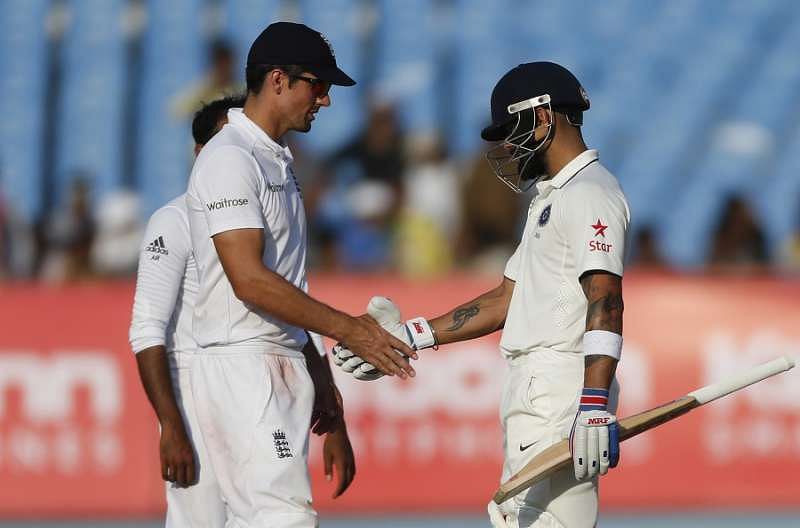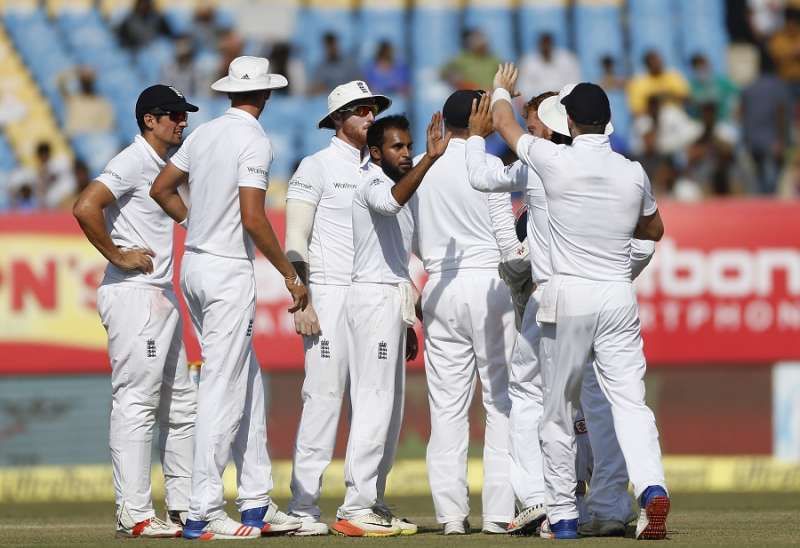
England regain momentum after Mirpur debacle
Steven Finn tried to flick a Mehedi Hasan delivery off his pads, but the ball hit his back leg. Bangladesh appealed and Kumar Dharmasena raised the finger. England’s agony and frustration were overshadowed by crazy celebrations at Mirpur. Alastair Cook and co. were left to ponder about their collapse in the final session of day 3 and the inability of the English batsmen to handle spin.
Neither had the England batsmen fared well against the turning ball nor had their spinners impressed on weary pitches in Mirpur.
England’s next assignment would be against India in India. Those who toured India over the past few years experienced humiliation on rank-turners. Ravi Ashwin, Ravindra Jadeja and Amit Mishra are Virat’s lethal weapons who devour the opposition batsmen with turn, zip, flight and accuracy.
Australia in 2013, South Africa in 2015 and New Zealand in 2016 were all steamrolled in ruthless fashion, and considering the circumstances, England’s chances of doing well on Indian soil were low. And, after getting nailed by Mehedi and Shakib Al Hasan, very few dreamed of a better outcome in India.
As soon as the first Test started, the pessimistic hopes and statements about England’s poor show took a back seat as the Three Lions exhibited a professional display throughout the five days and ended with their heads high.
Also read: India vs England 2016 1st Test: 5 Talking Points
England’s performance has surprised many, but it was not a flash in the pan.
What changed?
Firstly, the English batsmen stuck to basics while batting against Ashwin, Jadeja and Mishra. They did not try to attack by coming down the pitch. They also did not succumb to the dreaded sweep shot. Instead, they used their feet excellently and picked the gaps very well by getting behind the line of the ball more. They played the ball with a straight bat and executed strokes by allowing the ball to come closer to the body. The bad balls were not spared, but either punished or pushed for singles or twos.
Secondly, the best way to neutralise spinners is by rotating the strike rather than blocking them and inviting pressure. Whenever a batsman rotates the strike, automatically it creates doubts in the minds of the spinners which results in loose balls. England batsmen invested more time in strike rotation. It not only helped them to dominate the Indian spinners but also contributed to effective partnerships.
Thirdly, the English spinners learned from Bangladesh about how to be more productive on subcontinental tracks. They brought the Indian batsmen forward by pitching it up more rather than pitching it on the short or good length. Rashid and Moeen Ali’s length hardly gave the Indian batsmen the freedom to go on the back foot and thus, they were able to test and tease the top order and fetch wickets.
Fourthly, the reverse swing and aggressive intent from the English pacers reaped rewards. Yes, it paid rich dividends in Chittagong and Mirpur as well and in India, it didn’t help to trigger a collapse, but always kept the Indian batsmen under pressure. The aggression and skill of Chris Woakes, Stuart Broad and Ben Stokes created the platform for breakthroughs in the crucial juncture of the match.
Finally, during the Test series in Bangladesh, there lacked a certain amount of composure and self-assurance among the English players, especially the batsmen. Lack of composure denied them the opportunity to graft partnerships while absence of self-assurance dented their ability to focus and read the turn of the ball. Also, the English spinners, short on confidence, failed to pitch it up more and were hence, unable to gain positive results from the weary tracks in Chittagong and Mirpur.
Also read: Sunil Gavaskar feels England have already achieved a 'moral victory' in Rajkot
Mental toughness
At Rajkot, England were able to remain more composed and self-assured in what they were doing. They were not gripped by depression at Mirpur and they did not lose their self-confidence but instead, held their heads high and arrived ready for a battle. The English think tank learned lessons from their mistakes in Bangladesh and studied different ways to improve their game.
Their perseverance was evident during the first Test at Rajkot which was supposed to be a forgone conclusion in favour of the home team. To the astonishment of all, it was England who ended the Test dominantly. Without a doubt, England have gained some much-needed momentum. It will be interesting to see whether they will be able to maintain such a high level in the remaining Test matches.


